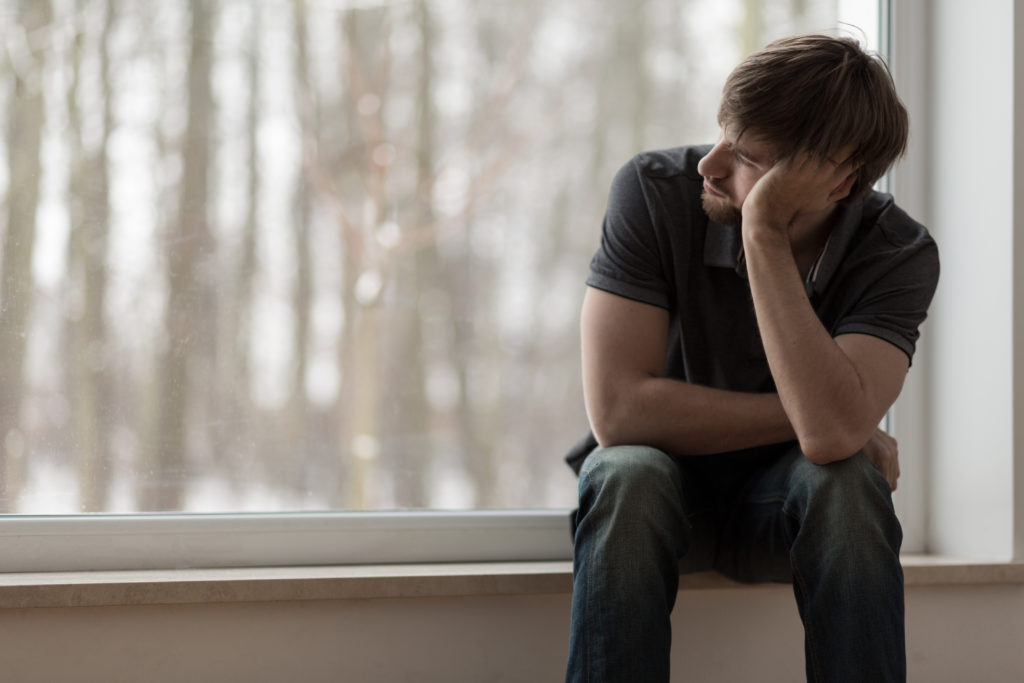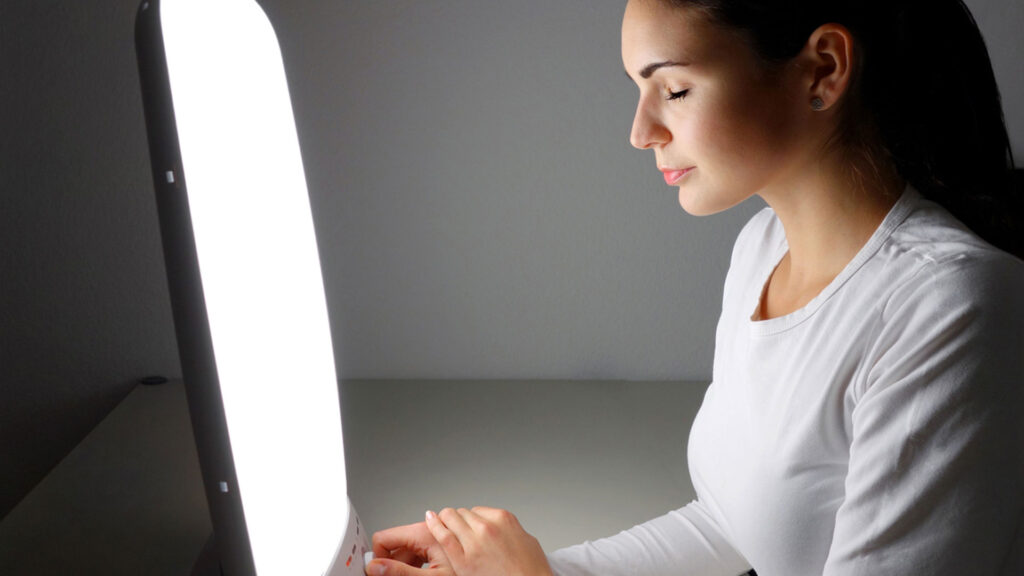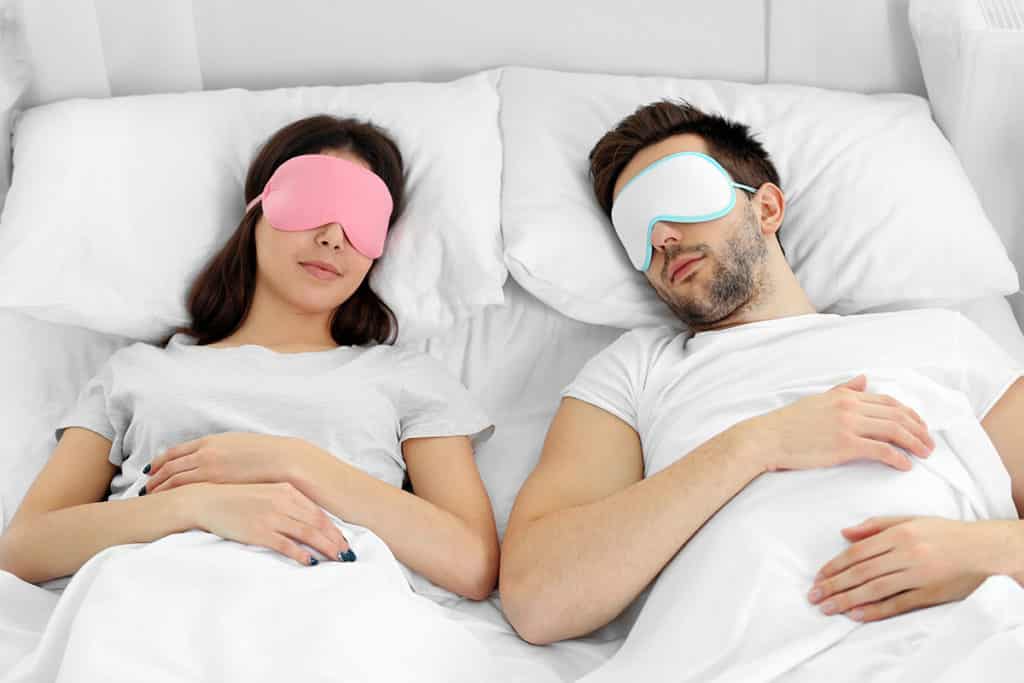For many people, the changing seasons bring new beginnings. The sunshine and warmth of spring and summer mean longer days, more time spent outdoors, and an overall sense of happiness and wellbeing. However, as the cold winter months set in and darkness falls, many people experience a dip in their mood and energy levels. While this is sometimes referred to as the “winter blues” for some people, it can be a sign of something more serious.
Seasonal Affective Disorder (SAD) is a type of depression that occurs at the same time every year—usually at the end of fall or the beginning of winter. SAD can affect all aspects of a person’s life, from their general mood and outlook on life to their productivity levels and sleep patterns.
Are you concerned you may have an undiagnosed case of SAD or are struggling to maintain a healthy lifestyle, including achieving quality sleep? In this article, we’ll take a closer look at this disorder, including symptoms, diagnosis and treatment. We’ll also explore ways that SAD affects sleep and how to overcome it.

Seasonal Affective Disorder (SAD) Explained
Nearly 10 million adults suffer from SAD and women are four times more likely to be diagnosed with this condition than men. Many symptoms of SAD mirror those associated with traditional depression or even normal changes in your mood or demeanor. What makes this condition unique is the fact that a person’s fluctuating mood is controlled by the changing seasons.
In most cases, the fall and winter months trigger these symptoms. One of the main reasons why is that the days become shorter, with the sun setting earlier and rising later. Longer stretches of darkness can negatively impact your overall mood, causing increased feelings of sadness, loneliness, depression and lack of motivation.
Symptoms of SAD
The most common symptoms of SAD are changes in your mood and sleep patterns. Many people with SAD report feeling depressed, lethargic and unmotivated during the winter months. Lack of sleep or disturbed sleep can worsen these symptoms, creating a negative cycle of sadness and exhaustion.
Here are common SAD symptoms to keep an eye out for.
Fatigue or Lack of Energy
Darkness in the early morning hours makes it difficult for some people to wake up or feel motivated to tackle the day. This lack of motivation can increase feelings of depression and lower self-worth. As night falls and it becomes darker earlier in the evening, people with SAD feel compelled to go to bed or lay down. Lack of physical activity can also worsen depression symptoms, making it increasingly difficult to fall asleep or find the energy to be productive.
On the other side of the equation, people with SAD feel completely different during the spring and summer months when the days are longer and there’s more daylight. They often report feeling more energized, productive and alert. Unfortunately, this can lead to manic behaviors and difficulty sleeping. During the warmer months, some SAD sufferers feel on edge, hyper-arousal or even hypomanic. It’s this extreme switch from feeling depressed and lethargic in the winter months to feeling overly stimulated in the summer months that characterize a SAD diagnosis.
Social Withdrawal
It’s not uncommon for people with SAD to “feel like hibernating” during the colder and darker months. That’s because one of the hallmark symptoms of SAD is social withdrawal, or avoiding people and activities you’d usually enjoy. Some people also experience an increased sensitivity to rejection, which can cause people to socially withdraw even further, especially from close relationships.
In addition to actively avoiding people and activities they enjoy, certain individuals with SAD actually lose interest and pleasure in their favorite pastimes. This loss of interest generally isn’t permanent, as symptoms wax and wane throughout the year with changing seasons.
Feelings of Sadness or Hopelessness
While some people feel overly tired and others withdraw socially, more extreme cases of SAD can cause feelings of sadness or hopelessness. Others may experience anxious or “empty” feelings, a.k.a feeling numb. As an official form of depression, SAD can also cause some people to feel depressed most of the day. The difference between SAD and traditional depression is that these feelings are triggered by seasonal changes.

Changes in Appetite
Lack of sleep and seasonal depression can alter your appetite. Some people have decreased appetite and subsequently lose weight, while others have an increased appetite, specifically cravings for carbs, and gain weight. Weight loss or weight gain is usually unintended, as the changes in appetite can make it tough to maintain proper nutrition and eat balanced meals. Plus, fatigue and lack of energy can also make it hard to exercise regularly.
Recognizing SAD
Identifying and diagnosing SAD isn’t always easy since many of the symptoms are associated with other common conditions and forms of depression. It’s important to recognize the few, key symptoms that are linked to a seasonal mood disorder versus general depression and other mental health conditions.
It usually takes several years for SAD to present itself, as a pattern of behaviors emerge. If you notice that your mood changes every few months or that you’re severely impacted by the change in light cycles and time, you may have SAD. If your symptoms are short-lived or only occur once over the course of several years, it may be an isolated incident triggered by something else. Consider major life changes including ending or starting a relationship, a recent career change, moving to a new location and other significant events. All of these could cause changes in mood that have nothing to do with the seasons. It takes most people two to three years to recognize a recurrent theme that suggests the cause is SAD.
The Connection Between SAD and Sleep
Now that you have a better understanding of what SAD is and how it presents itself, let’s explore the complex relationship between this mood disorder and sleep.
Many people suffering from depression have trouble falling asleep at night and experience excessive sleepiness during the daytime hours. These symptoms are magnified in those with SAD. In many cases, it doesn’t matter how many hours of sleep a person gets or if they nap during the day, they’re still excessively tired. Lack of energy and motivation causes many people with SAD to become more withdrawn and sleep (or try to sleep) more often. The problem is, this sleep is usually restless and inconsistent. It’s not the type of deep, restorative sleep needed to wake up feeling happy, positive and energized.
Another common sleep side effect associated with SAD is frequent and vivid nightmares soon after falling asleep. In one study, 16% of the participants diagnosed with SAD experienced graphic nightmares. This can lead to interrupted sleep and poor quality sleep.
The main reason SAD impacts sleep more in the winter months than in the summer is due to lack of sunlight. Sunlight signals to your brain and body that it’s time to be awake, alert and productive. People with mood disorders or those at high risk for depression are more likely to feel increasingly sluggish and sleepy in the winter months when sunlight is limited and darkness falls.
This imbalance is also due in part to your body’s internal sleep-wake cycle or circadian rhythm. Your circadian rhythm operates on a 24-hour cycle, signaling your body when it’s time to sleep and when it’s time to wake up. Dating back to ancient times, long before there were clocks or smartphones, the rising and setting of the sun helped establish a healthy circadian rhythm. Now, with electronic devices at our fingertips, people are exposed to constant stimulation and artificial light. These elements confuse your brain and body, making it difficult to determine if you should be awake or asleep.
Because there are fewer daylight hours in the winter months, your circadian rhythm can become misaligned. As the sun sets much earlier, you may find yourself getting tired hours before you normally go to bed. For example, on the longest day of the year (June 21), the sun doesn’t set in some parts of the world until around 8:25 p.m. On the shortest day of the year (December 21), the sun sets at approximately 5:40 p.m. That’s nearly a three hour difference! This extreme shift in sunlight and darkness can confuse your body’s sleep-wake cycle and interrupt your normal sleep schedule. It can also worsen depression symptoms or, over time, develop into seasonal affective disorder.
Tips for Living With and Combating SAD Symptoms
Whether you’ve recently been diagnosed with SAD or believe these symptoms apply to you, there’s help available. In addition to seeing medical and mental health professionals, or taking an antidepressant or insomnia medication, you can also make some lifestyle changes to improve both your mood and your sleep quality.
Know the Warning Signs
Your best defense against developing SAD is a strong offense. While you can’t totally prevent this mood disorder from developing, you can take some precautionary steps to lessen its effects on your energy levels, sleep schedule, mood and lifestyle.
As the winter months approach, slowly start to adjust your schedule. Avoid taking naps during the day so that you’re more tired at night. This will help you fall asleep faster, achieve a deeper sleep, and wake less frequently. Spend more time outdoors and in the sunlight. This can help realign your circadian rhythm. Engage in physical activity and other hobbies you enjoy that promote good health, high energy levels and improved mood.
RELATED: 21 Tools for Emotional Wellness and Sleep Health
Light Therapy

Light therapy is one of the most popular and effective methods for treating SAD. Because SAD symptoms are associated with increased darkness and reduced daylight, increasing light exposure can help.
In light therapy, also known as phototherapy, patients sit approximately two to three feet away from a specially designed light box for 30 to 60 minutes. It’s best to perform this exercise within 60 minutes of waking up in the morning to help your brain and body associate the daylight with being awake. The light emitted from this box is designed to mimic natural sunlight and alter certain brain chemicals that are linked to mood.
Patients using light therapy to treat SAD usually see results within a few days or weeks. You can purchase a light box for yourself or see a doctor or sleep specialist trained in light therapy. There are several different light boxes available so it’s important to familiarize yourself with the different models and strengths. This ensures you purchase a box that is both safe and effective for your specific condition.
Sleep Hygiene
Since SAD can wreak havoc on sleep, taking your sleep hygiene into account—and making it a priority—can be one way to combat symptoms of SAD. Sleep hygiene is a set of actions, patterns and behaviors related to one’s sleep environment. For example, this can be your bedtime routine, the temperature you set your bedroom to and even how dark and/or light your room is.
To create a sleep-promoting bedtime environment, most experts agree that the temperature of your bedroom should be between 60 and 67 degrees Fahrenheit, with the sweet spot falling somewhere around 65 degrees. If your room is naturally warm, you can also use a ceiling and/or floor fan to keep cool. Your bedroom should also be dark and quiet. Blackout curtains can help keep out light pollution, while a fan or sound machine can help muffle noise. Ear plugs are another option for sleeping quietly, especially if you share a bed with a snoring or noisy partner, or live in a large and/or louder household.
You should also strictly limit your bed use to the two S’s: sleep and sex. Working on a laptop, answering emails and even scrolling your phone should be off limits while in bed, as blue light exposure emitted by these devices can negatively impact sleep, potentially worsening SAD and existing sleep issues. Many experts agree that watching TV in bed can cause these same effects.
Alternatively, there are many evening activities that can help promote good sleep, all of which can safely be included in your bedtime routine. These include taking a warm bath before bed, doing yoga or meditation, or settling in with a good book instead of flipping on your favorite show on Netflix.
A consistent bedtime and wake time are also critical to maintaining proper sleep hygiene. While going to sleep and getting up at the same time every day isn’t always possible due to work schedules or family life, the more you can create a routine for yourself, the easier it will be for your body to understand when it’s time to go to sleep and when it’s time to get up in the morning. Lastly, cutting out caffeine consumption in the afternoon and evening can also help you practice good hygiene (and won’t leave you overstimulated at night).

Physical Activity
It’s no secret that exercise is a key component of physical and mental health, and physical activity can have a tremendous impact on sleep. Exercise and sleep are closely related. Daily exercise can not only improve your quality of sleep, but help you fall asleep more quickly. Even 15 minutes of exercise can boost your mood and reduce the risk of major depression, which can help people with SAD who are experiencing fatigue, sadness or hopelessness.
Healthy Diet
Since SAD can have such a major impact on appetite, maintaining a healthy diet is critical to both alleviating symptoms and getting good, quality sleep. Nutrition plays a key role in promoting sleep, although research on this topic is still ongoing. So far we know that certain foods and drinks, such as cherries and chamomile tea, can help you both fall and stay asleep. Other foods and drinks, like alcohol or high-sugar snacks, can actually disrupt sleep.
With SAD having the potential to negatively impact sleep by causing some people to sleep too little or too much, making nutrition a priority in the fall and winter months is essential to maintaining both physical and mental health.
Psychotherapy and CBT
Therapy is another common treatment option for SAD. The most popular type is cognitive behavioral therapy (CBT) which helps patients restructure their thoughts, beliefs and feelings. CBT for insomnia can also help if SAD symptoms are negatively impacting your sleep quality.
Through guided therapy talk sessions, you’ll learn healthy ways to cope with your mood disorder, like adopting more productive routines and reducing avoidance behavior. A trained therapist can help you recognize and identify negative thoughts and behaviors that are making your condition worse. You’ll also learn helpful techniques for managing everyday stress and anxiety which will, in turn, reduce your SAD symptoms and make it easier to establish a healthy sleep routine.
Click here to learn more about how therapy can improve sleep!
Medication
Last but not least is the option to take medication when SAD symptoms become overwhelming. Extended-release antidepressants are commonly used to treat this mood disorder and may be prescribed a few months before your symptoms usually begin. It may take several weeks for the medication to enter your system and for you to see the full benefits. These medications can help prevent depressive episodes and put you in a more positive mindset to handle symptoms when they arise. Some antidepressants may also have the added benefit of helping you sleep better at night.
The Takeaway
Depression is the most common mental health illness in the world and it comes in all forms. While some people only express minimal symptoms, others suffer all day, every day. SAD is a unique form of depression triggered by the changing seasons and shorter, darker winter days. Recognizing the warning signs of this disorder can help you reduce symptoms and adopt healthier patterns of behavior, including sleep patterns.
FAQs
How does seasonal affective disorder disrupt sleep?
Research suggests that the main reason SAD impacts sleep more in the colder and darker months is because of lack of sunlight. Since sunlight signals to your brain and body when it’s time to go to sleep and wake up, longer stretches of darkness can throw off sleep cycles, causing people to feel sluggish.
Does seasonal affective disorder make you sleep more?
SAD can make you sleep more for several reasons. First is the lack of sunlight (darkness tells your brain and body it’s time for bed), while feeling fatigued or lethargic can make you more tired than usual, causing you to sleep more.
Can SAD cause sleep problems?
There are several factors associated with SAD that can impact sleep. Lack of sunlight might disrupt your sleep patterns, while changes in appetite, lethargy and feelings of sadness might also keep you awake or asleep too long. Social withdrawal and a lack of interest in one’s unusual activities, which may include exercise, can also keep people from doing activities that promote sleep.

